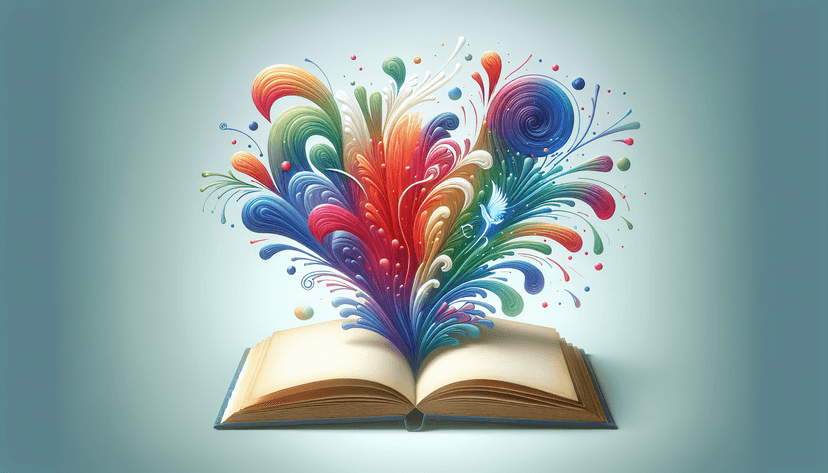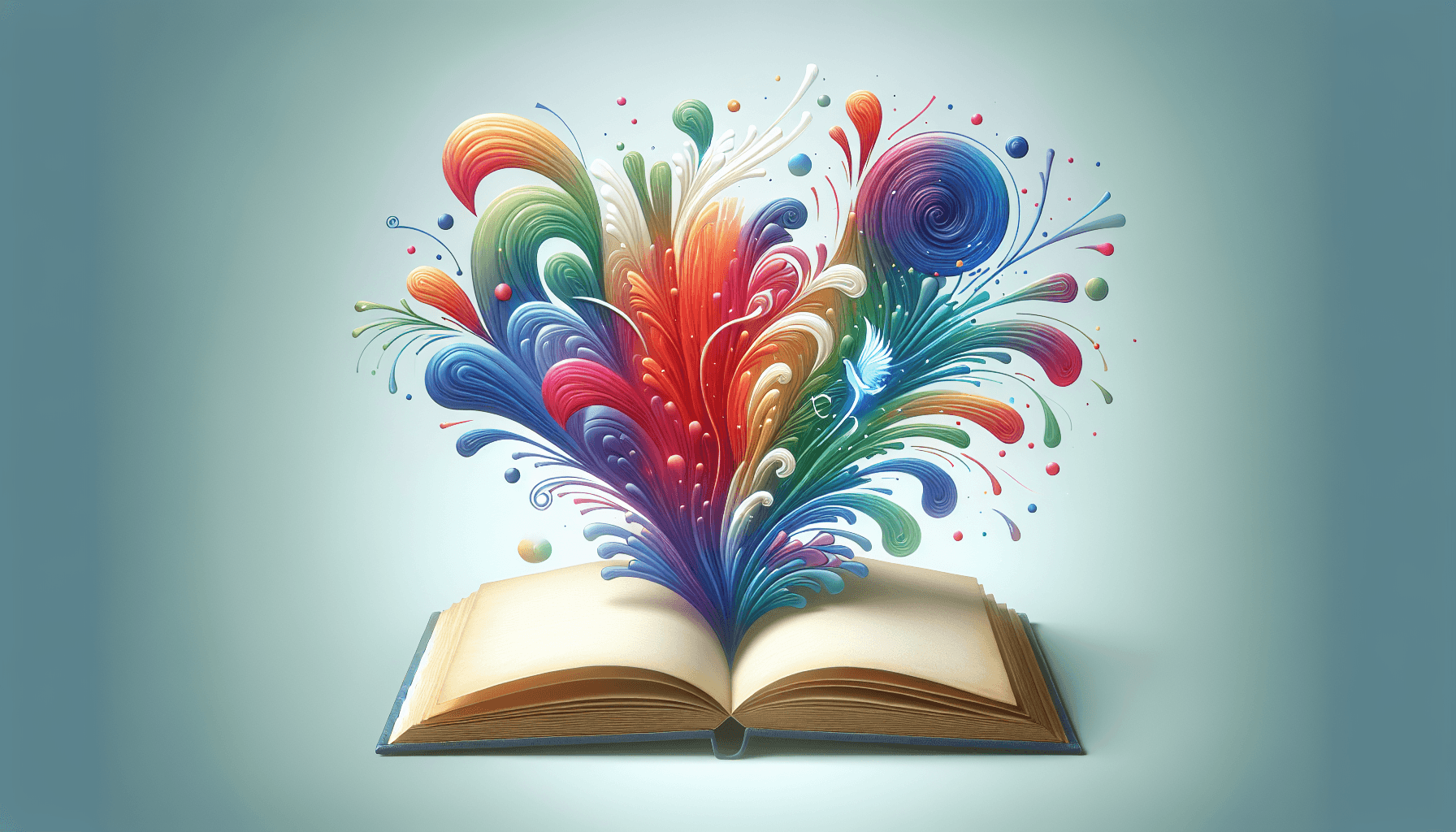Table of Contents
We all know that writing can sometimes feel a bit flat, right? You want your words to pop, to create mental images that make your readers feel like they’re right there with you. But how do you transform plain sentences into vivid scenes that linger in the mind?
Stick around, and I promise you’ll uncover the secrets to using imagery in your writing. We’ll explore practical tips and techniques that will breathe life into your prose and help your readers engage like never before.
From understanding the basics to experimenting with metaphors and getting feedback, you’ll discover simple strategies to elevate your writing. Let’s dive in and paint those literary pictures together!
Key Takeaways
- Imagery is about creating vivid mental pictures through sensory details.
- Use different types of imagery (visual, auditory, tactile, etc.) to enhance writing.
- Sensory details make scenes more relatable and immersive for readers.
- Metaphors and similes enrich descriptions and spark reader imagination.
- “Show, don’t tell” helps convey emotions through actions and details.
- Practice writing with exercises to improve imagery skills regularly.
- Revising your work can strengthen imagery by refining descriptions.
- Reading various styles exposes you to effective imagery techniques.
- Seek feedback to understand how your imagery impacts readers.
- Keep experimenting and learning about imagery to grow as a writer.

1. Understand the Basics of Imagery in Writing
Imagery in writing is all about creating vivid and descriptive pictures in the reader’s mind.
It taps into the senses—sight, sound, smell, taste, and touch—to enhance the reading experience.
When done well, imagery can evoke emotions and transport readers into the world you’re crafting.
For example, instead of saying “the flower was pretty,” you might say “the flower bloomed, showcasing vibrant petals of deep crimson that danced in the gentle breeze.”
This richer detail helps readers visualize the scene better, boosting engagement and interest.
To improve your imagery, practice choosing specific, evocative words that paint a clear picture.
2. Identify Different Types of Imagery
There are several types of imagery, each serving a unique purpose in your writing.
Visual imagery appeals to the sense of sight, while auditory imagery relates to sound.
Then there’s olfactory imagery for smell, gustatory imagery for taste, and tactile imagery for texture.
Understanding these forms can help you create more vivid and immersive scenes.
For instance, if you’re writing a beach scene, you might use visual imagery to depict the golden sand and blue waves, auditory imagery to describe the crashing surf, and tactile imagery to convey the warmth of the sun on skin.
Experiment with these different types to enhance the depth and resonance of your writing.
3. Incorporate Sensory Details to Enhance Imagery
Sensory details are your best friends when it comes to building strong imagery.
They allow readers to experience the story fully, engaging more than just their eyes.
Start by breaking down a scene into its sensory components: What can be seen, heard, smelled, tasted, and felt?
For example, instead of saying “it was a cold day,” try “the sharp, icy wind sliced through the air, numbing my cheeks and making my breath visible in puffs.”
This method makes your writing more relatable and tangible.
Reading aloud can help you identify areas where sensory details can be added or improved—listen for areas that feel flat and lack depth.

“`html
4. Use Metaphors and Similes to Create Vivid Pictures
Metaphors and similes are powerful tools in descriptive writing.
A metaphor connects two things directly, while a simile uses “like” or “as” to create a comparison.
For example, saying “the night was a blanket of stars” paints a picture as vividly as saying “the night was like a blanket sprinkled with diamonds.”
These comparisons spark imagination and help readers relate to unfamiliar concepts.
To strengthen your writing, practice integrating metaphors and similes that resonate with your theme.
Consider what images relate to the emotions or actions in your narrative and use them for clarity and depth.
5. Show, Don’t Tell: Techniques for Effective Imagery
“Showing” enhances imagery by letting readers experience emotions through actions and details.
Instead of stating “John was scared,” you might write “John’s hands trembled as he glanced at the shadow lurking in the corner.”
This kind of detail invites readers to feel the emotion rather than just understand it.
To master this technique, focus on using specific actions, dialogues, and environmental details to convey emotions.
For example, describe the chill of a room or the sound of footsteps approaching to build suspense.
Remember: engaging the senses can transport readers straight into the heart of your narrative.
6. Practice Writing Imagery Through Exercises
Regular practice helps improve your imagery skills.
Try writing free-verse poetry focused on sensory descriptions for a different perspective.
Another exercise is to select a vivid photograph and write a detailed scene around it, incorporating all five senses.
Additionally, take a short paragraph from your favorite book and rewrite it in your own style, making the imagery your own.
Consistent practice will not only enhance your descriptions but will also increase your overall writing confidence.
7. Revise and Edit for Stronger Imagery
Revisions are crucial to effective imagery; they allow you to refine your ideas.
During editing, look for areas where your descriptions can be more specific or vivid.
If a phrase doesn’t invoke a clear image, consider alternatives.
Reading your work aloud can also help to identify flow issues and clunky descriptions.
Taking breaks between drafts gives you fresh eyes, making it easier to spot areas for enhancement.
Don’t hesitate to cut out unnecessary words—less can sometimes be more in writing.
8. Read Widely to See How Others Use Imagery
Reading a variety of genres exposes you to different styles of imagery.
Pay attention to how authors use descriptive language to evoke emotions and create settings.
Classic literature often contains rich imagery, providing excellent examples of how to weave descriptions into storytelling.
Take notes on what resonates with you; consider what techniques might work in your own writing.
Remember, combining various styles can lead to your unique narrative voice.
9. Get Feedback on Your Use of Imagery
Feedback can provide valuable insights into how readers perceive your imagery.
Share your work with trusted friends or fellow writers who can offer constructive criticism.
Ask specific questions like, “Does this scene evoke the right emotion?” or “Is the imagery clear and understandable?”
Consider organizing or joining workshops where you can share and discuss your writing with others.
The more perspectives you have, the more you’ll learn how to improve your descriptive skills.
10. Keep Learning and Experimenting with Imagery in Your Writing
Imagery is an ever-evolving aspect of writing; there’s always room to learn.
Seek out resources such as workshops, books, and articles that focus on descriptive writing.
Participating in challenges, like writing prompts or specific tasks, can help you experiment with new techniques.
Also, stay informed about how to craft narratives using statistics. Research shows that content that includes data increases reader trust by 75%.
Try blending your imagery with factual storytelling to enhance the credibility of your work; just like good dialogue, it creates a more authentic experience.
Keep challenging yourself, and let your writing evolve with each new piece.
“`
FAQs
Imagery in writing refers to the use of descriptive language that engages the senses, helping readers visualize scenes, objects, or feelings. This technique creates a vivid and immersive experience for readers, enhancing emotional connection with the text.
Incorporate sensory details by describing sights, sounds, smells, tastes, and textures. Use precise adjectives and verbs to evoke strong images. Engage the reader’s senses by painting a picture that allows them to experience the scene vividly.
‘Show, don’t tell’ is a writing technique that encourages authors to convey emotions and actions through imagery and sensory details rather than straightforward statements. This approach enhances reader engagement and allows for deeper connections with characters and situations.
Reading widely exposes you to different styles and techniques of imagery, broadening your understanding of effective descriptions. Analyze how authors use sensory details and metaphors to inspire your own writing and refine your creative expression.



